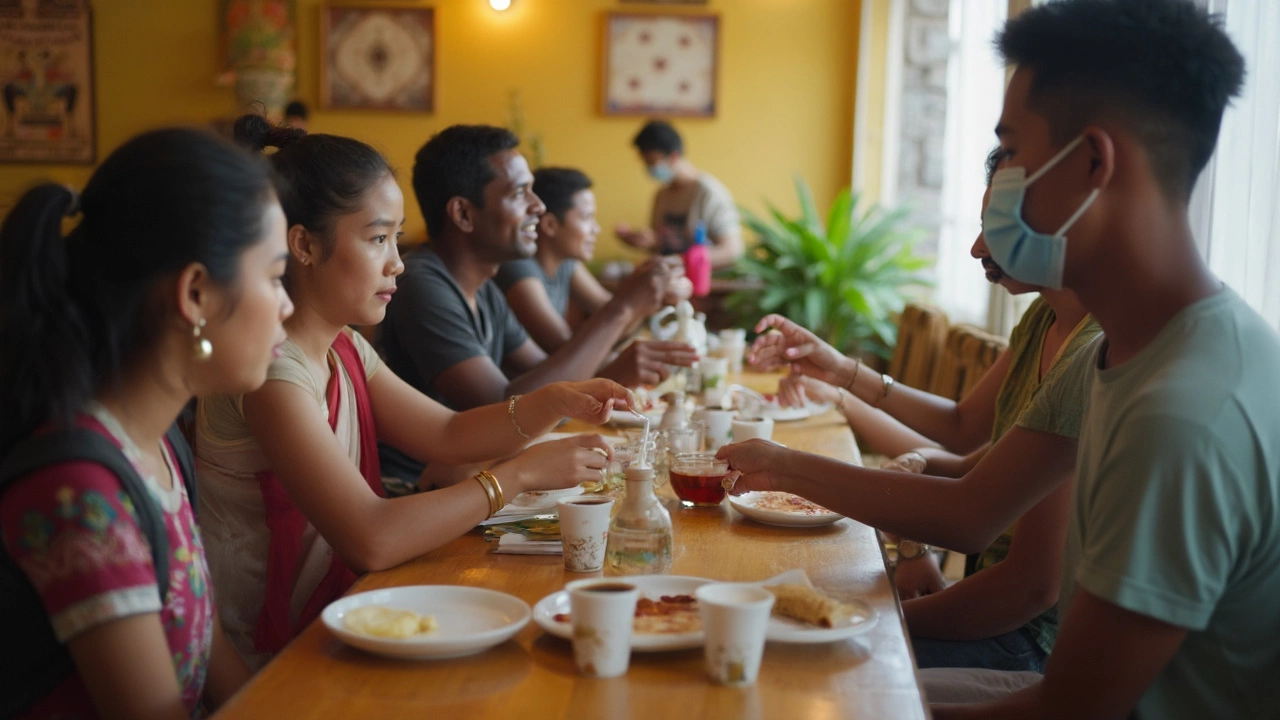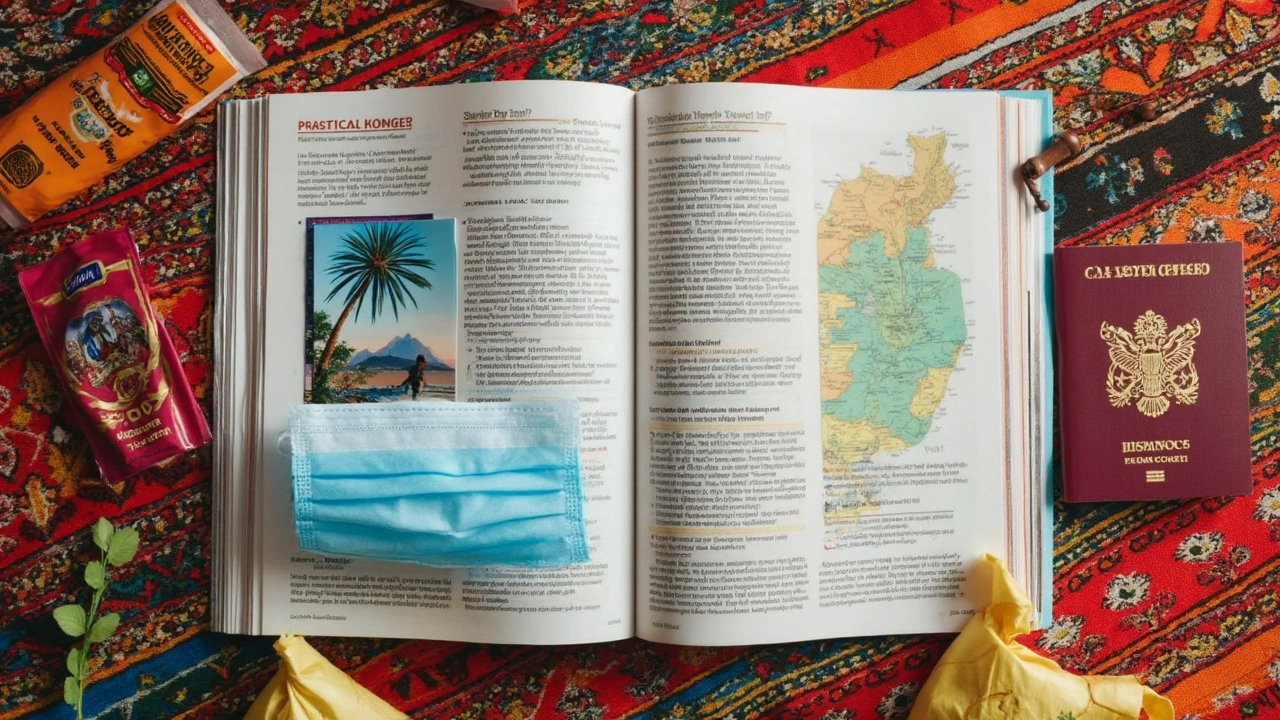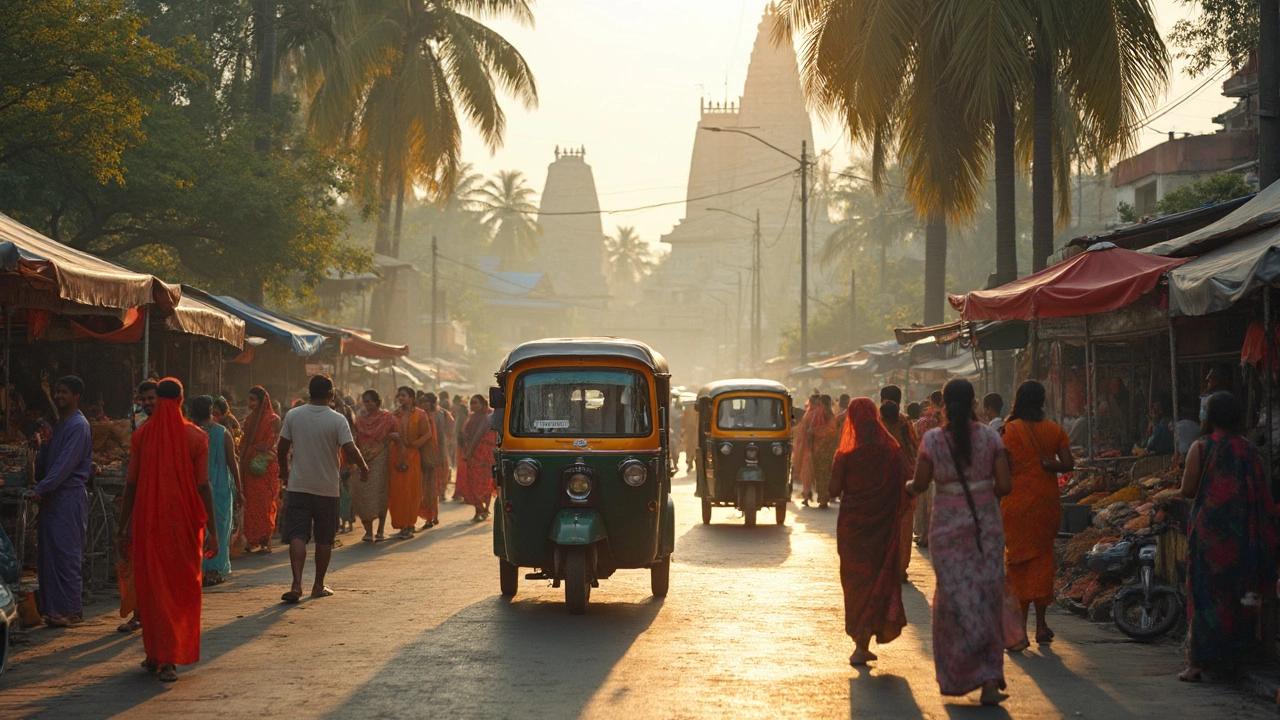The first question I always get when someone’s planning a trip to India: is it actually safe right now? The headlines can be loud and dramatic, but when you zoom in on South India, the story’s a lot less scary than you’d expect.
If you check out recent travel advisories, South India is open for business. There haven't been big disruptions, and places like Kerala, Tamil Nadu, Karnataka, and Goa are operating pretty normally. The airports, trains, and hotels are all running — but you’ll want to double-check entry rules since they can change with zero notice.
Cleanliness is a bigger deal for travelers than crime. South India generally feels safer than some northern cities, with fewer pickpocketing hotspots and aggressive touts. Still, basic rules apply: keep valuables zipped up, don’t flash gadgets, and trust your gut if a situation feels off.
Health-wise? It’s mostly about avoiding tummy trouble and mosquitoes. Filtered water is easy to find — make it a habit. People do get mild food poisoning, so stick to places that look busy and clean. And don’t forget bug spray, especially around dusk. If you ever need help, locals in South India are usually warm and helpful, especially if you try a word or two in their language.
- What's Happening in South India Right Now?
- Local Safety and Health Concerns
- Travel Logistics: Getting In and Around
- Common Scams and How to Avoid Them
- Tips for a Low-Stress Trip
What's Happening in South India Right Now?
South India these days feels a lot like its old self — lively, colorful, and pretty chill, especially compared to the chaos you might expect from news headlines. The famous spots like Kochi, Mysuru, Hampi, and Pondicherry are all welcoming tourists again. Festivals and music events are back, and you’ll spot temples bustling with both locals and travelers taking selfies or sipping sweet chai just outside.
There aren't any panic-level alerts in south india travel for 2025. Most districts haven’t seen major disruptions or protests lately. Public transport is back to full swing, with buses and trains running on normal schedules. Airports at Chennai, Bengaluru, and Kochi are busy, and you’ll find direct flights from places like Dubai, Singapore, and even London. The rainy season started a bit late this year, but it's mostly predictable—if you’re planning monsoon treks, pack light waterproofs and keep an eye on local weather apps like IMD Weather.
Here’s a quick look at current travel basics for South India in May 2025:
| Area | Status | Notes |
|---|---|---|
| Kerala | Open | Beaches and backwaters busy. Some roadwork in Kochi, minor delays. |
| Karnataka | Open | Land borders open, some city protests shut down for now. |
| Tamil Nadu | Open | Major temple towns busy with festivals, roads crowded. |
| Goa | Open | Tourist season’s in full swing. Hotels close to capacity. |
Crowds are creeping back to pre-2020 levels, though you won’t feel super crushed except at big festivals or weekend beaches. If you like smaller crowds, aim for weekday visits and less-famous gems like Kumbakonam or Wayanad.
A few practical tips: always check local news for any sudden changes. The Weather Channel or Google News has pretty reliable updates for India right now. And if you’re traveling between states, keep a digital or paper copy of your hotel booking and ID handy — it speeds things up at inter-state checkpoints.
Local Safety and Health Concerns
People often picture India as chaotic, but if you're headed to South India, you'll notice it’s usually less hectic than the north. Petty crime is much less common in places like Bengaluru, Kochi, and Thiruvananthapuram compared to really crowded cities like Delhi or Mumbai. Statistically, South India has lower reported crime rates against tourists—sticking out less means less attention from pickpockets. Police presence around tourist spots is decent. Most towns have women-only compartments on trains and a visible police number posted at stations, which is reassuring for solo travelers.
Getting sick is more likely to mess with your trip than any local scam. Bad stomachs happen—traveler’s diarrhea is so common it’s almost a rite of passage. Always drink sealed bottled water. In most restaurants and hotels, you’ll find RO (reverse osmosis) filtered water—they’ll say so if you ask. Fruits you can peel and piping hot food lower the risk too.
Mosquitoes carry diseases like dengue and chikungunya. These aren’t rare during the wetter months (June–September is prime mosquito time). Bring a good bug spray, preferably with DEET. Many homestays and hotels provide plug-in repellents, but it’s smart to use both.
Here’s what travelers ask most about staying healthy and safe in South India:
- South india travel tip: Carry hand sanitizer—soap isn’t always available in public restrooms.
- Public transport is busy but not unsafe. Opt for pre-paid cabs or trusted apps like Uber or Ola instead of random auto rickshaws late at night.
- If you need a pharmacy, you’ll easily find one and most pharmacists speak English.
- Hospitals in big cities are good. Private hospitals like Apollo and Manipal treat foreigners all the time, and wait times are way shorter than in many western countries.
Here’s a quick comparison of the stuff you actually have to watch for:
| Concern | How Likely? | What to Do |
|---|---|---|
| Petty theft | Low to moderate | Keep bags zipped, don’t walk alone late at night |
| Food poisoning | Moderate | Eat at busy spots, avoid tap water |
| Mosquito-borne illness | Moderate (in monsoon) | Use spray, wear long sleeves at dusk |
| Major accidents or violence | Rare | Trust your gut, avoid protests/crowds |
You won’t need special vaccines except for the basics (typhoid and hepatitis A are common picks, but check with your doctor). South Indians tend to be extra-friendly toward visitors—ask for help if you’re uneasy and someone will pitch in.

Travel Logistics: Getting In and Around
If you’re planning a trip to South India, sorting out the basics—planes, trains, and local rides—is easier than you might think, but there are a few things you really need to know. Right now, all the main international airports in South India (like Bengaluru, Chennai, Kochi, and Hyderabad) are open for regular flights. South india travel has picked up pace, but check your airline’s website for last-minute schedule changes. E-visas for most nationalities are back and the process is mostly online, but make sure you print a copy to avoid stress at immigration.
Once you land, getting around is where most travelers start to feel the real India. The trains still run as the main arteries of travel. Booking tickets on IRCTC (that’s the official Indian Railways site) is possible with an international card, but the process is honestly a bit clunky. Alternatively, apps like MakeMyTrip make it much smoother and are widely used by both locals and foreigners. For buses, KSRTC (Kerala) and TNSTC (Tamil Nadu) have reliable long-distance options, and you can find routes and book on RedBus.
For short rides, good news: Uber and Ola work in every big city and even in most smaller towns. They cost less than back home and make things less stressful, especially when you don’t want to haggle with a taxi driver. Auto rickshaws (tuk-tuks) are everywhere, but always agree on the price before you hop in—otherwise, expect a “scenic route” and a raised eyebrow at the final fare.
"India’s transport network is huge, but planning ahead makes all the difference between a headache and an adventure," says Lonely Planet’s South India guide (2024 Edition).
If you want to rent a car, brace yourself for wild city traffic—left-hand driving, no personal space, and a constant chorus of horns. Self-drive is possible with an international license (Zoomcar is the top rental app), but most travelers prefer hiring a car with a driver. It’s affordable and honestly a huge relief if you’re not used to India’s road style.
- Book internal flights to cover longer distances (Chennai to Kochi, for example, in under two hours).
- Always check the official government tourism sites for updated travel rules or route closures, especially during festival seasons or weather events.
- If you’re going into rural or hillside areas, have backup plans—sometimes buses are late or canceled last minute because of rain or road work.
You can plan the trip yourself with a bit of patience, or grab a local travel agent for peace of mind. Either way, the basics work—just allow extra time, expect delays, and you’ll settle into the rhythm soon enough.
Common Scams and How to Avoid Them
Even in friendly South India, some locals see tourists as easy targets. It’s usually not dangerous, but scammers love a quick buck. Most travelers bump into tricks that are more annoying than risky, but it still pays to be prepared. Here’s a rundown of the most frequent scams in this region, along with how you can dodge them and keep your south india travel adventure smooth.
- Fake Ticket Sellers: At big temples, tourist spots, or train stations you might notice people offering to "help" you buy tickets. They’ll offer special prices or shortcuts, but it’s almost always a ripoff. Official counters are usually easy to find, so stick to those.
- Auto Rickshaw Overcharging: Autos are cheap but some drivers jack up the price for foreigners. Insist on the meter or use ride apps like Ola and Uber in cities. If the meter "doesn’t work," negotiate hard before getting in.
- “Closed” Hotel or Attraction: A tout might tell you your hotel or the temple is “closed for renovations” and steer you toward a friend’s shop or another hotel (usually expensive or lousy). Don’t believe it—always call your hotel directly or check online for real info.
- Fake Guides: Real guides have government badges. If someone approaches without ID but claims to be official and pushes tours, give them a hard pass. Book guides through your hotel or from legit websites.
“Tourists can avoid most scams in India by arranging transportation and accommodation in advance and using reputable booking platforms.”
- Lonely Planet India Travel Guide, 2024 Edition
It helps to know what these tricks cost travelers on average. Here’s a quick breakdown based on recent reports:
| Scam Type | Typical Loss (USD) | Where It Happens |
|---|---|---|
| Fake ticket sellers | $5–$20 | Major attractions, temples, train stations |
| Rickshaw overcharging | $1–$10 per ride | City centers, bus stops, tourist areas |
| Fake guides | $10–$50 | Historic sites, beaches, parks |
| “Closed” hotel/attraction scam | $20–$100 | Entry points, near hotels, travel hubs |
Here’s what actually works to stay safe:
- Always double-check info yourself (call or Google before believing a tout).
- Stick with official counters and prebook when you can.
- If you feel pressured, walk away. There’s always another option.
- Use ride hailing apps in cities; in smaller towns, ask locals for a price range before bargaining for autos.
A bit of healthy skepticism will save you money, and that means more for street snacks (try filter coffee—Jasper would approve, if cats drank coffee!).

Tips for a Low-Stress Trip
If you want your South India trip to be smooth, planning is half the battle. Grab a local SIM card right when you land — it’s cheap and makes apps like Google Maps and Uber your new best friends. These days, prepaid taxis at airports are way safer and less hassle than bargaining with drivers outside.
Money-wise, don’t count on your card everywhere. ATMs are all over, but sometimes they run out of cash or just decide not to like your card. It’s smart to keep some smaller notes for things like chai, tuk-tuks, or tipping porters. If you use payment apps like Paytm or Google Pay, you’ll look like a pro — lots of places accept them now.
When booking hotels or guesthouses, read those reviews. Seriously, a place with lots of recent, positive feedback is almost always a safe bet. Many travelers stick to sites like Booking.com for the flexible cancellation policies if something goes sideways. If you’re heart-set on a homestay in Kerala or a boutique spot in Pondicherry, call or message ahead to confirm details.
Worried about getting sick? Nothing kills a vibe faster. Stick to bottled or filtered water, watch where you eat, and pack a basic medical kit. It’s not just about stomach bugs — the sun is intense, so sunscreen and a hat will save your skin. And even though street food is famous here, go where it’s busy and fresh. If something looks like it’s been sitting out for hours, skip it.
- If you’re using trains or buses, get your tickets early. Indian Railways open bookings 30 days before, and the best seats go fast. There’s also an official IRCTC app for booking — it’s wonky but works.
- Be ready for power cuts. Most hotels have some backup, but bring a charged power bank for your phone, especially if you’re off to smaller towns or the mountains.
- Carry a light scarf or shawl. It’s handy for sudden temple visits, sun cover, or just dealing with those over-enthusiastic ACs on buses.
If you want one last reminder, don’t get hung up on things running late or plans changing. Trains can be slow. The weather decides everything during the monsoon. People here are laid-back for a reason. Roll with it, stay flexible, and your south india travel memories will be a lot more fun than your worries.
